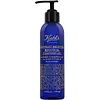What's inside
What's inside
 Key Ingredients
Key Ingredients

 Benefits
Benefits

 Concerns
Concerns

 Ingredients Side-by-side
Ingredients Side-by-side

Ethylhexyl Palmitate
EmollientZea Mays Germ Oil
EmollientIsopropyl Myristate
EmollientCaprylic/Capric Triglyceride
MaskingPolyglyceryl-10 Dioleate
EmulsifyingPolyglyceryl-6 Dicaprate
EmulsifyingOenothera Biennis Oil
EmollientPolyglyceryl-2 Oleate
EmulsifyingSqualane
EmollientCoriandrum Sativum Seed Oil
EmollientPhenoxyethanol
PreservativeLavandula Angustifolia Oil
MaskingIsopropyl Lauroyl Sarcosinate
Skin ConditioningDicaprylyl Ether
EmollientDicaprylyl Carbonate
EmollientGeranium Maculatum Oil
MaskingRosmarinus Officinalis Leaf Oil
MaskingLinalool
PerfumingTocopherol
AntioxidantCitronellol
PerfumingGeraniol
PerfumingLimonene
PerfumingGlycine Soja Oil
EmollientGlyceryl Stearate Citrate
EmollientEthylhexyl Palmitate, Zea Mays Germ Oil, Isopropyl Myristate, Caprylic/Capric Triglyceride, Polyglyceryl-10 Dioleate, Polyglyceryl-6 Dicaprate, Oenothera Biennis Oil, Polyglyceryl-2 Oleate, Squalane, Coriandrum Sativum Seed Oil, Phenoxyethanol, Lavandula Angustifolia Oil, Isopropyl Lauroyl Sarcosinate, Dicaprylyl Ether, Dicaprylyl Carbonate, Geranium Maculatum Oil, Rosmarinus Officinalis Leaf Oil, Linalool, Tocopherol, Citronellol, Geraniol, Limonene, Glycine Soja Oil, Glyceryl Stearate Citrate
Prunus Amygdalus Dulcis Oil
Skin ConditioningCaprylic/Capric Triglyceride
MaskingPEG-6 Caprylic/Capric Glycerides
EmulsifyingPEG-8 Beeswax
EmulsifyingCetearyl Alcohol
EmollientSorbitan Stearate
EmulsifyingSambucus Nigra Oil
MaskingPEG-60 Almond Glycerides
EmulsifyingParfum
MaskingSilica
AbrasiveAvena Sativa Kernel Oil
Skin ConditioningTriticum Vulgare Germ Oil
EmollientButyrospermum Parkii Butter
Skin ConditioningCitrus Aurantium Dulcis Peel Wax
Skin ConditioningGlycerin
HumectantLecithin
EmollientBorago Officinalis Seed Oil
EmollientPhenoxyethanol
PreservativeCocos Nucifera Oil
MaskingCitronellol
PerfumingGeraniol
PerfumingAcacia Decurrens Flower Wax
EmollientRosa Multiflora Flower Wax
Skin ConditioningTocopherol
AntioxidantCocoyl Hydrolyzed Collagen
CleansingRosa Canina Fruit Oil
EmollientCarthamus Tinctorius Seed Oil
MaskingBenzyl Salicylate
PerfumingSimmondsia Chinensis Seed Oil
EmollientRose Extract
Skin ConditioningPelargonium Graveolens Oil
MaskingRosa Damascena Flower Oil
MaskingRosa Damascena Extract
MaskingPadina Pavonica Thallus Extract
Skin ConditioningPrunus Amygdalus Dulcis Oil, Caprylic/Capric Triglyceride, PEG-6 Caprylic/Capric Glycerides, PEG-8 Beeswax, Cetearyl Alcohol, Sorbitan Stearate, Sambucus Nigra Oil, PEG-60 Almond Glycerides, Parfum, Silica, Avena Sativa Kernel Oil, Triticum Vulgare Germ Oil, Butyrospermum Parkii Butter, Citrus Aurantium Dulcis Peel Wax, Glycerin, Lecithin, Borago Officinalis Seed Oil, Phenoxyethanol, Cocos Nucifera Oil, Citronellol, Geraniol, Acacia Decurrens Flower Wax, Rosa Multiflora Flower Wax, Tocopherol, Cocoyl Hydrolyzed Collagen, Rosa Canina Fruit Oil, Carthamus Tinctorius Seed Oil, Benzyl Salicylate, Simmondsia Chinensis Seed Oil, Rose Extract, Pelargonium Graveolens Oil, Rosa Damascena Flower Oil, Rosa Damascena Extract, Padina Pavonica Thallus Extract
 Reviews
Reviews

Ingredients Explained
These ingredients are found in both products.
Ingredients higher up in an ingredient list are typically present in a larger amount.
This ingredient is an emollient, solvent, and texture enhancer. It is considered a skin-softener by helping the skin prevent moisture loss.
It helps thicken a product's formula and makes it easier to spread by dissolving clumping compounds.
Caprylic Triglyceride is made by combining glycerin with coconut oil, forming a clear liquid.
While there is an assumption Caprylic Triglyceride can clog pores due to it being derived from coconut oil, there is no research supporting this.
Learn more about Caprylic/Capric TriglycerideCitronellol is used to add fragrance/parfum to a product. It is often derived from plants such as roses. In fact, it can be found in many essential oils including geranium, lavender, neroli, and more. The scent of Citronellol is often described as "fresh, grassy, and citrus-like".
Since the Citronellol molecule is already unstable, Citronellol becomes irritating on the skin when exposed to air.
Citronellol is a modified terpene. Terpenes are unsaturated hydrocarbons found in plants. They make up the primary part of essential oils.
Citronellol is not able to be absorbed into deeper layers of the skin. It has low permeability,
Citronellol is also a natural insect repellent.
Learn more about CitronellolGeraniol is used to add fragrance/parfum to a product. It is the main component of citronellol. It is a monoterpenoid and an alcohol.
Monoterpenes are naturally found in many parts of different plants.
Geraniol can be found in many essential oils including Rose Oil and Citronella Oil. The scent of Geraniol is often described as "rose-like". Many foods also contain Geraniol for fruit flavoring.
Geraniol can irritate the skin when exposed to air. However, irritation depends on the ability of geraniol to penetrate into the skin. In general, geraniol is not able to penetrate skin easily.
Geraniol is colorless and has low water-solubility. However, it is soluble in common organic solvents.
Like citronellol, it is a natural insect repellent.
2,6-Octadien-1-ol, 3,7-dimethyl-, (2E)-
Learn more about GeraniolPhenoxyethanol is a preservative that has germicide, antimicrobial, and aromatic properties. Studies show that phenoxyethanol can prevent microbial growth. By itself, it has a scent that is similar to that of a rose.
It's often used in formulations along with Caprylyl Glycol to preserve the shelf life of products.
Tocopherol (also known as Vitamin E) is a common antioxidant used to help protect the skin from free-radicals and strengthen the skin barrier. It's also fat soluble - this means our skin is great at absorbing it.
Vitamin E also helps keep your natural skin lipids healthy. Your lipid skin barrier naturally consists of lipids, ceramides, and fatty acids. Vitamin E offers extra protection for your skin’s lipid barrier, keeping your skin healthy and nourished.
Another benefit is a bit of UV protection. Vitamin E helps reduce the damage caused by UVB rays. (It should not replace your sunscreen). Combining it with Vitamin C can decrease sunburned cells and hyperpigmentation after UV exposure.
You might have noticed Vitamin E + C often paired together. This is because it is great at stabilizing Vitamin C. Using the two together helps increase the effectiveness of both ingredients.
There are often claims that Vitamin E can reduce/prevent scarring, but these claims haven't been confirmed by scientific research.
Learn more about Tocopherol